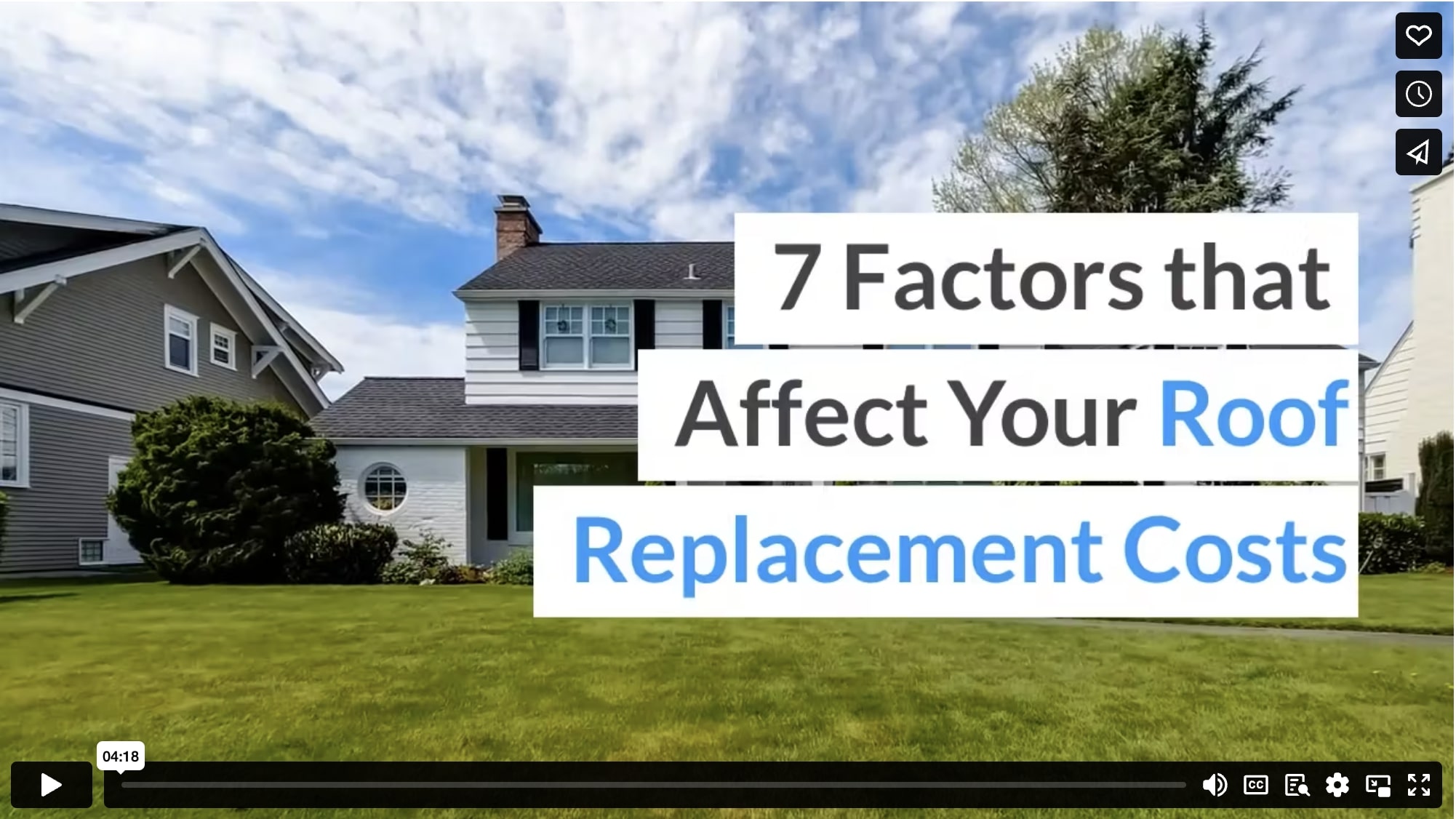The time has come. Your roof is looking a little shabby. It has outlived its usefulness, and you’re pretty sure it’s time for a replacement. How much should you budget for this expense? An exact estimate requires selecting materials and options and having your roofing contractor examine your roof. But you can understand ahead of time what elements will affect the price of your new roof. These are the factors that go into determining how much this upgrade will cost:
Shape, Size, and Style of Your Roof
More roof, more money. The larger your roof’s surface area, the higher your quote will be. Because it takes more time and materials to install a roof with more surface area, a larger roof will cost more.
If you have multiple rooflines, towers, or outcroppings, the installation process is more complicated. That can also drive up replacement costs.
Material Choice
Your choice of roofing materials is one of the most significant factors in determining your total cost. It is also the one over which you have the most control. The cheapest material may not always be the best choice or the one that costs you the least over time. You should consider factors like expected lifespan, warranty, and how well the material holds up to the weather in your area.
Your roofing contractor should be able to advise you on how to balance the price of materials with the roof’s performance. Roofing contractors in Utah will know what works best for that climate. Use the expertise of your roofing company when deciding where you can save and where it makes sense to spend a bit more.
You can ask your contractor to price several different materials so you can compare costs. A material with a color you like only slightly better may cost substantially more, in which case you might decide it isn’t worth significant additional expense. On the other hand, if a much higher-quality product is only slightly more expensive, that might be an investment worth making.
Selecting your roofing material means considering appearance, warranty, longevity, quality, and even energy efficiency. Don’t just choose the cheapest option, even if the price is a primary concern. Saving a few hundred dollars on the roof replacement bill doesn’t make sense if you will need a new roof again years sooner or your electric bills end up hundreds of dollars more expensive. That’s why it is essential to factor in all elements of the decision.
Slope of the Roof
A flat surface is much easier to work on than a deeply sloped one. Steep roofs may require additional safety equipment, scaffolding, or larger crews. They may also take longer. That extra time, labor, and equipment will increase your costs. If you have a roof with a steep pitch, you can expect your quote to be higher.
Removal Expenses
In most cases, your roofer will need to tear off your old roof to replace it. The type of roof being removed can affect labor and disposal costs, thereby affecting your total price.
Accessibility
If your property is remote, difficult to access, or has many large trees that restrict access to the roof, your roof replacement will be more complicated and, therefore, more expensive.
Additional Components Required
Are you adding or replacing additional features as part of the roof replacement? Putting in a skylight or replacing an aging gutter system will contribute to the cost of your project. Each component you add to the scope of the work will involve more time and materials, which also means more expense. However, doing these projects as standalone jobs after your roof replacement can cost even more still. Having them done when you already have a crew working on your roof makes sense.
Water Damage or Structural Issues
If water incursion, an improperly installed roof, or other issues have created problems with the underlying structure that holds your roof, costs could increase significantly. While roofing contractors will look for signs of damage when generating your quote, the old roof may hide these issues until it is removed. Regardless of when problems are found, you will need to replace rotting structural materials. This additional work requires more time, personal hours, and materials and can substantially increase costs.
This is one reason it is critical that you periodically check your roof for signs of damage or failure. If left too long, problems can spread from the roofing materials to the structure, increasing your risk of water damage to your home and a more expensive replacement when you finally act on the issues.
All of these elements will affect the overall costs of your roof replacement. However, it is essential to remember that the cheapest options are only sometimes the best and could even cost you more in terms of repairs, damage, or shorter lifespan. Discuss all your options with your roofing company to ensure you end up with the best choice for your home.
Infographic
Explore the key factors influencing roof replacement costs in this infographic. Understand how dimensions, complexity, material choices, roof slope, removal expenses, property accessibility, and additional components contribute to overall costs. Detecting water damage or structural issues during replacement emphasizes the importance of regular roof inspections. Engage in discussions with roofing companies for informed decisions aligned with your home’s needs.

Video

